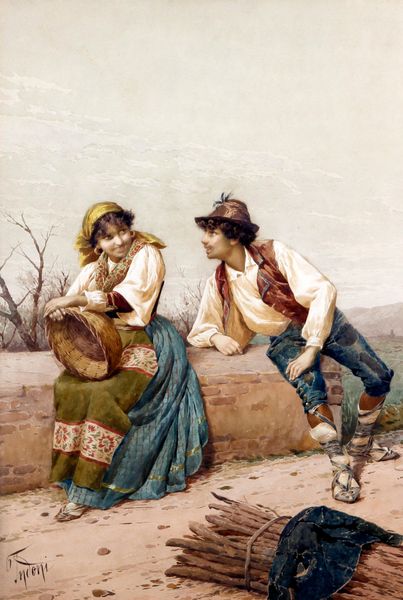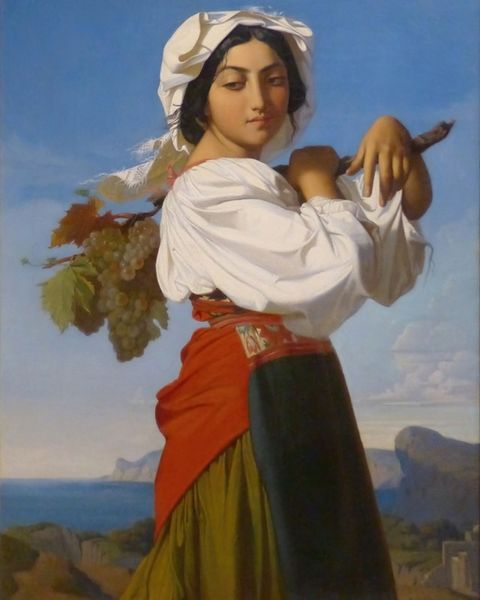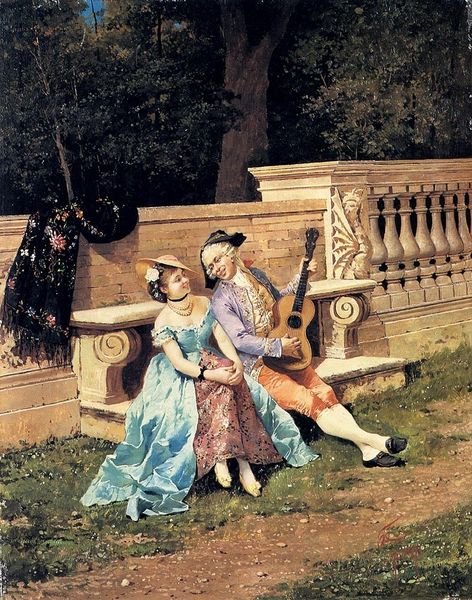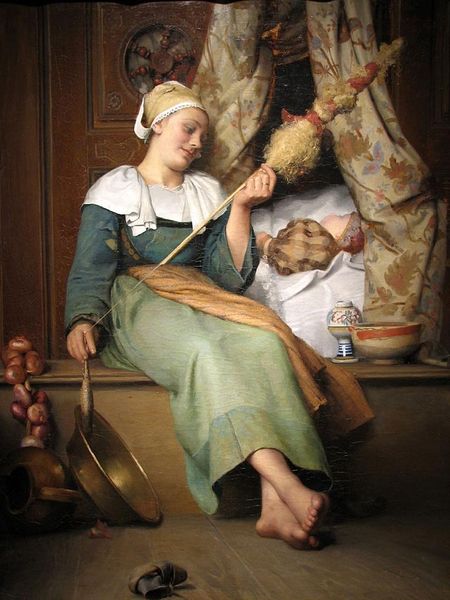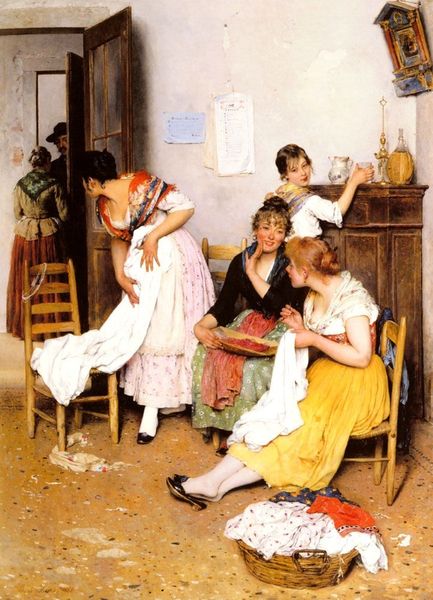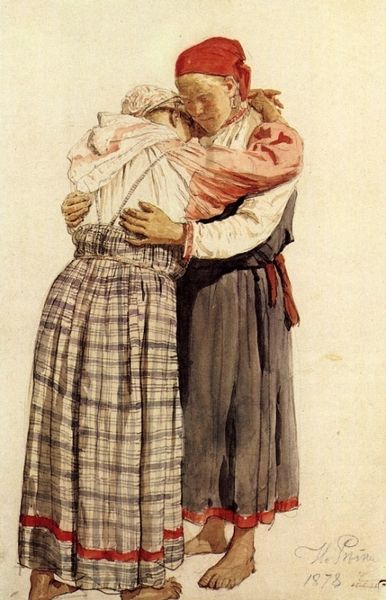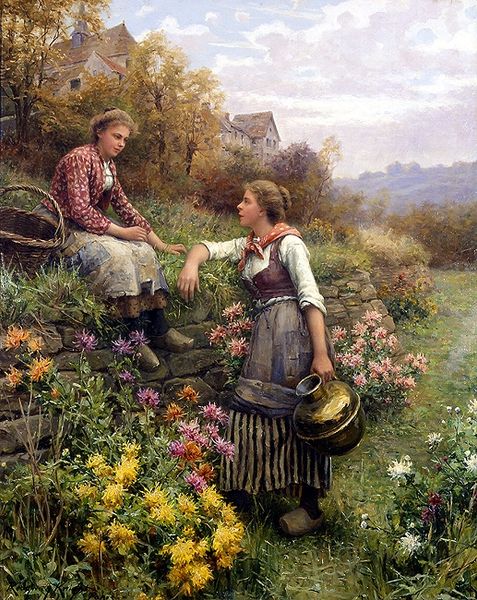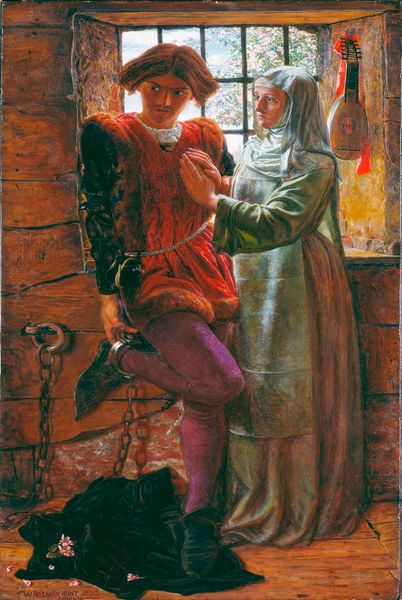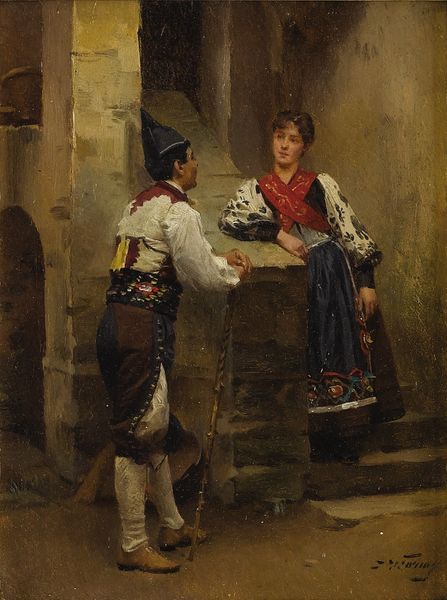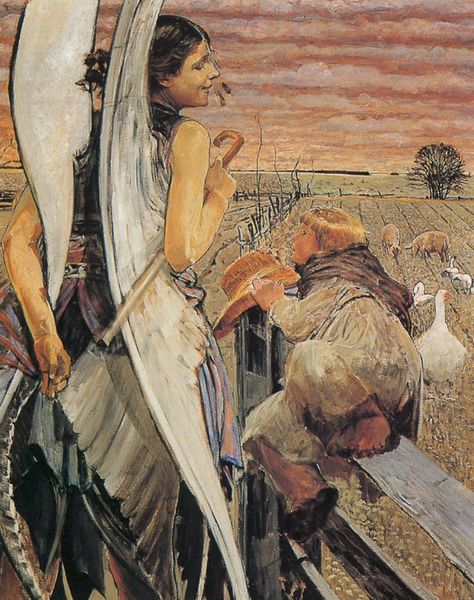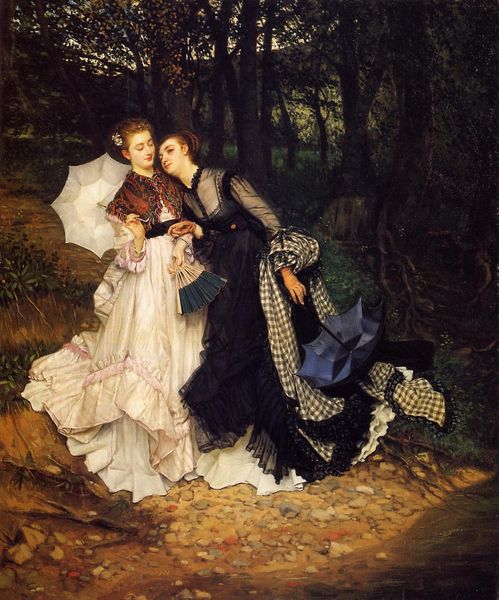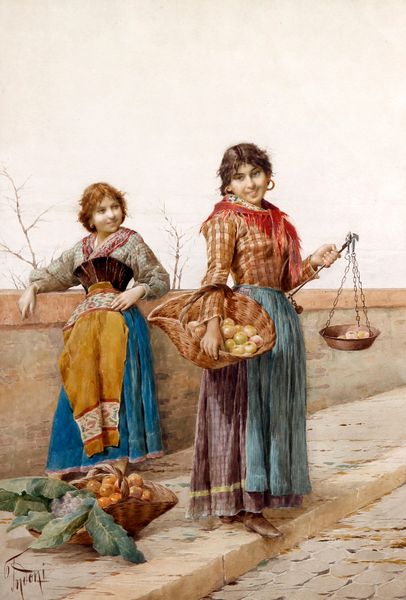
Dimensions: 144.02 x 107.95 cm
Copyright: Public domain
Curator: Looking at this spirited painting by Léon Bazile Perrault, created in 1879, what captures your eye first? It's entitled "The Tarantella." Editor: It's immediately vibrant. The unrestrained energy, the earth tones balanced against the bright reds... it feels liberating, like an escape. Almost overwhelmingly… festive? Curator: Indeed, Perrault encapsulates a moment of raw, almost primal joy. Note the dancers' bare feet, connecting them directly to the earth. It speaks to a specific moment of Romanticism that idealized nature and a simpler existence. And, of course, there’s the costume. Editor: The costuming feels important – those layered fabrics, the bright vests, could signify regional identity. Is Perrault reinforcing or challenging stereotypes of this “folk” culture by portraying it so...carefree? There's a subtle erotic charge here as well that complicates a surface reading, I feel. Curator: I think he's more interested in conveying emotion through the symbol of the dance. Consider the historical associations of the tarantella itself; legend claims it's a frenzied dance meant to counteract the effects of a spider bite, literally shaking off a venomous poison. Editor: So the dance is both escape and cure? That lends it a powerful subtext. The threat, implied but never visible, driving these young women. There's also something about how the landscape, normally so dominant in Romantic painting, is relegated to a blurred backdrop here. All focus is on the figures and the dance. Curator: The landscape anchors the cultural context, while the women’s bodies – their movement, their expressions – they embody the emotion. It creates a fascinating tension. Editor: Ultimately, seeing this painting now makes me think of marginalized people reclaiming their narratives through artistic expression, even under oppression, through dance. There's something deeply relevant to that, still. Curator: An expression through symbolism of cultural resilience - I’d agree, well put. It underscores how symbols continue to resonate long after their immediate contexts are forgotten.
Comments
No comments
Be the first to comment and join the conversation on the ultimate creative platform.
